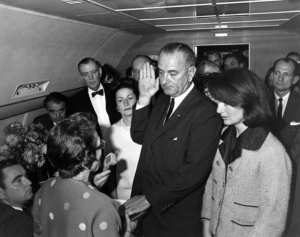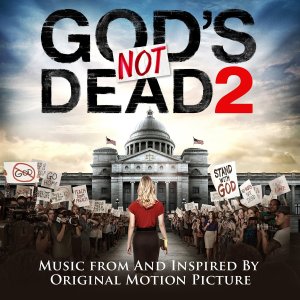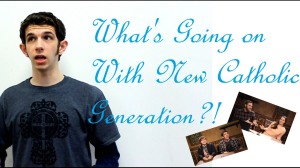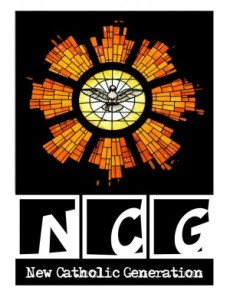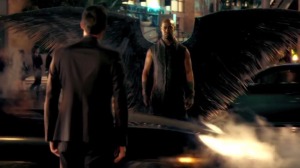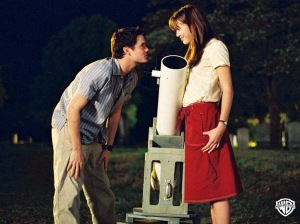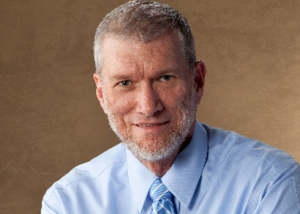
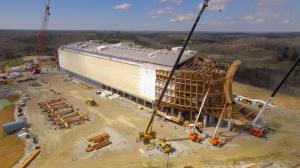
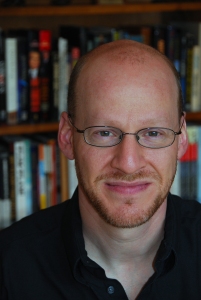
Phil Plait, who likes to be known as The Bad Astronomer, is a 51-year-old Boulder, Colorado writer, popular science blogger and a leading promoter of scientific skepticism. His PhD in astronomy from the University of Virginia in 1994 included a dissertation on SN 1987A, a supernova in the outskirts of the Tarantula Nebula in the Large Magellanic Cloud, a nearby dwarf galaxy. Plait has worked as part of the Hubble Space Telescope team and is a very bright guy. But he’s also the kind of science zealot that puzzles me, such as here on Slate May 12 in a post headlined “Ken Ham Really Doesn’t Understand Science”
(http://www.slate.com/blogs/bad_astronomy/2016/05/12/creationist_ken_ham_tweeted_a_series_of_very_bad_claims_meant_to_be_scientific.html) when he takes on Ham, the young earth creationist behind the Answers in Genesis ministry, the $27-million Creation Museum in Petersburg, Kentucky, which opened on May 28, 2007, and the “Ark Encounter,” which opens July 7, and bills itself as a “one-of-a-kind, historically themed attraction” and at 510 feet in length, “the largest timber-frame structure in the United States.”
Plait accuses Ham of refusing to listen to “anything science has to say” and propagating falsehoods.
Writes Plait: “And I know this for a fact. That’s because Ham took to Twitter recently, posting a series of tweets that are not just wrong, but completely wrong, again demonstrating not just a misunderstanding of the topic, but a deep – I daresay fundamental – lack of understanding of even the most basic facts about the science he’s trying to deny.”
OK.
As a Catholic, I don’t really have a dog in this race or fight, as the idiom goes.
As Pope Francis noted, speaking to the Pontifical Academy of Sciences in October 2014, theories such as the Big Bang and evolution are not contrary to Catholic beliefs. Nothing Plait writes here is beyond the pale theologically for Catholics. But at the same time, as fashionable as it is intellectually to do so, we don’t dismiss creationism and folks like Ken Ham out of hand either. Why is that? Could have something to so with the fact professing Christians subscribe to a religion whose origin rests on accepting on faith the truth claim the founder rose from the dead after three days. The resurrection is the lynchpin of Christianity. In Chapter 15, Verses 14 to 19, of the Apostle Paul’s First Letter to the Church at Corinth, he writes of the resurrection of Jesus as being the central doctrine in Christianity: “If Christ has not been raised, then our preaching is in vain and your faith is in vain,” Paul observed. And if Christ has not been raised, he added, God is being misrepresented because “we testified of God that he raised Christ.” Therefore, if Christ has not been raised, “your faith is futile: “If only for this life we have hope in Christ, we are to be pitied more than all men.”
The entire Christian faith hinges upon the centrality of the resurrection of Jesus on the third day, and the hope for a life after our own death.
“Credo in Deum – ‘I believe in God’ the opening words of the Apostle’s Creed.” Managing director Margo Smith, and her sister-in-law, Kathie Smith, who in 1996 purchased Hull’s Family Bookstores in Winnipeg, which has been in business since 1919, from the Hull family, suggested on their website in 2014: “Ripley’s Believe It or Not! should include the fact that all two billion members of the 30,000-plus Protestant, Orthodox and Catholic denominations of the Christian church today, can agree on one statement of faith: The Apostles’ Creed. If it’s been a sufficient statement for the church for nearly 19 centuries, then it’s a sufficient statement to describe what we believe at Hull’s Family Bookstores.”
If you profess to be a Christian, with the Apostles’ Creed, this is what you are assenting to:
I believe in God, the Father Almighty, Creator of Heaven and earth; and in Jesus Christ, His only Son Our Lord, Who was conceived by the Holy Spirit, born of the Virgin Mary, suffered under Pontius Pilate, was crucified, died, and was buried. He descended into Hell; the third day He rose again from the dead; He ascended into Heaven, and sitteth at the right hand of God, the Father almighty; from thence He shall come to judge the living and the dead. I believe in the Holy Spirit, the holy Catholic Church, the communion of saints, the forgiveness of sins, the resurrection of the body and life everlasting. Amen.
While the debate over competing theories of Darwinian evolution and biblical creationism was famously showcased during the so-called Scopes Monkey Trial in Tennessee in 1925, the resolution of the matter – much to the surprise of secularists who had thought it settled for 50 years – is no closer today than it was in 1925, or when it reignited around 1975.
If anything, the issue is more contested in more venues in more ways than ever, with “intelligent design” now added to the mix in recent years, much to the dismay of secular scientists, other academics and many public school science teachers.
Evolution is the theory that generations of animal and plant species alter and transform over time in response to changes in their environment and circumstances, a process known as natural selection.
Intelligent design is the proposition that scientific evidence exists to show that life in its multitudinous forms was caused by the direction of a higher intelligence. In 1925, prosecutors charged John Thomas Scopes, a high school science teacher in Dayton, Tennessee, with teaching evolution, which had just been outlawed. Represented by the famed defense lawyer, Clarence Darrow, Scopes was found guilty and fined after a high-profile trial, but the conviction was later overturned on a technicality, although the statute prohibiting the teaching of evolution remained on Tennessee’s law books until its repeal in 1967.
William Jennings Bryan, a well-known Populist, former Nebraska congressman and three-time candidate for the United States presidency, who delivered one of the most famous and fiery orations in American history almost 30 years earlier in 1896 with his “Cross of Gold” speech at the Democratic national convention in Chicago, denouncing a gold standard monetary policy, argued the prosecution’s case for the State of Tennessee.
Catholics think in terms of cosmological evolution, biological evolution and human evolution. One’s opinion concerning one of these areas does not dictate what one believes concerning others.
People usually take three basic positions on the origins of the cosmos, life and humans: special or instantaneous creation; developmental creation or theistic evolution; and non-theistic or random forces evolution.
The first theory holds that a given thing did not develop, but was instantaneously and directly created by God. The second position holds that a given thing did develop from a previous state or form, but that this process was under God’s guidance. The third claims that a thing developed due to random forces alone.
Related to the question of how the universe, life, and man arose is the question of when they arose? Those who attribute the origin of all three to special creation often hold that they arose at about the same time, perhaps 6,000- to-10,000 years ago. Those who attribute all three to non-theistic evolution have a much longer time scale. They generally hold the universe to be 10 billion to 20 billion years old, life on earth to be about four billion years old, and modern man –homo sapiens – to be about 30,000 years old.
Those who believe in varieties of developmental creation hold dates used by either or both of the other two positions. Around 13.82 billion years is the current best estimate for the age of the universe by those in the non-theistic camp. “Until recently,” says the United States National Aeronautics and Space Administration (NASA), “astronomers estimated that the Big Bang occurred between 12 and 14 billion years ago. To put this in perspective, the solar system is thought to be 4.5 billion years old and humans have existed as a genus for only a few million years. Astronomers estimate the age of the universe in two ways: by looking for the oldest stars; and by measuring the rate of expansion of the universe and extrapolating back to the Big Bang; just as crime detectives can trace the origin of a bullet from the holes in a wall.”
While there are definite parameters to the Catholic position on the origins of the cosmos, life and humans, much also concerning the belief or unbelief in evolution remains unsettled.
“Concerning cosmological evolution,” a tract from Catholic Answers, the El Cajon, California apostolate started in 1979 by attorney Karl Keating says, “the Church has infallibly defined that the universe was specially created out of nothing [ex nihlo]. Vatican I solemnly defined that everyone must ‘confess the world and all things which are contained in it, both spiritual and material, as regards their whole substance, have been produced by God from nothing’ (Canons on God the Creator of All Things, canon 5). “The Church does not have an official position on whether the stars, nebulae, and planets we see today were created at that time or whether they developed over time (for example, in the aftermath of the Big Bang that modern cosmologists discuss). However, the Church would maintain that, if the stars and planets did develop over time, this still ultimately must be attributed to God and his plan, for scripture records: ‘By the word of the Lord the heavens were made, and all their host [stars, nebulae, planets] by the breath of his mouth’ (Psalm 33:6).
“Concerning biological evolution, the Church does not have an official position on whether various life forms developed over the course of time. However, it says that, if they did develop, then they did so under the impetus and guidance of God, and their ultimate creation must be ascribed to him.
“Concerning human evolution, the Church has a more definite teaching. It allows for the possibility that man’s body developed from previous biological forms, under God’s guidance, but it insists on the special creation of his soul. Pope Pius XII declared that ‘the teaching authority of the Church does not forbid that, in conformity with the present state of human sciences and sacred theology, research and discussions … take place with regard to the doctrine of evolution, in as far as it inquires into the origin of the human body as coming from pre-existent and living matter – [but] the Catholic faith obliges us to hold that souls are immediately created by God’ (Pius XII, Humani Generis 36), a papal encyclical promulgated on Aug. 12, 1950. “So whether the human body was specially created or developed, we are required to hold as a matter of Catholic faith that the human soul is specially created; it did not evolve, and it is not inherited from our parents, as our bodies are.
“While the Church permits belief in either special creation or developmental creation on certain questions, it in no circumstances permits belief in atheistic evolution,” says Catholic Answers, which received the nihil obstat (no objection) imprimatur for setting out the position of the Church “free of doctrinal or moral errors” from Bernadeane Carr, the director of the San Diego Diocesan Institute in Chula Vista, California, and the censor librorum of the Diocese of San Diego, and the imprimatur in accord with the 1983 Code of Canon Law (CIC) 827, which is where the Church’s norms on the authorization of books and other written materials is primarily found, and where permission to publish the work by now Bishop emeritus Robert Brom of the Diocese of San Diego was given in August 2004.
“Much less has been defined as to when the universe, life, and man appeared,” notes Catholic Answers. “The Church has infallibly determined that the universe is of finite age – that it has not existed from all eternity – but it has not infallibly defined whether the world was created only a few thousand years ago or whether it was created several billion years ago.
“Catholics should weigh the evidence for the universe’s age by examining biblical and scientific evidence. “Though faith is above reason, there can never be any real discrepancy between faith and reason. Since the same God who reveals mysteries and infuses faith has bestowed the light of reason on the human mind, God cannot deny himself, nor can truth ever contradict truth (Catechism of the Catholic Church 159).
“The contribution made by the physical sciences to examining these questions is stressed by the Catechism, which states, ‘The question about the origins of the world and of man has been the object of many scientific studies which have splendidly enriched our knowledge of the age and dimensions of the cosmos, the development of life-forms and the appearance of man. These discoveries invite us to even greater admiration for the greatness of the Creator, prompting us to give him thanks for all his works and for the understanding and wisdom he gives to scholars and researchers (CCC 283).
“It is outside the scope of this tract to look at the scientific evidence, but a few words need to be said about the interpretation of Genesis and its six days of creation. While there are many interpretations of these six days, they can be grouped into two basic methods of reading the account – a chronological reading and a topical reading.
“According to the chronological reading, the six days of creation should be understood to have followed each other in strict chronological order. This view is often coupled with the claim that the six days were standard 24-hour days.
“Some have denied that they were standard days on the basis that the Hebrew word used in this passage for day (yom) can sometimes mean a longer-than-24-hour period (as it does in Genesis 2:4). However, it seems clear that Genesis 1 presents the days to us as standard days. At the end of each one is a formula like, ‘And there was evening and there was morning, one day’ (Genesis. 1:5). Evening and morning are, of course, the transition points between day and night (this is the meaning of the Hebrew terms here), but periods of time longer than 24 hours are not composed of a day and a night. Genesis is presenting these days to us as 24-hour, solar days. If we are not meant to understand them as 24-hour days, it would most likely be because Genesis 1 is not meant to be understood as a literal chronological account.
“That is a possibility.” Pope Pius XII warned us, ’What is the literal sense of a passage is not always as obvious in the speeches and writings of the ancient authors of the East, as it is in the works of our own time. For what they wished to express is not to be determined by the rules of grammar and philology alone, nor solely by the context; the interpreter must, as it were, go back wholly in spirit to those remote centuries of the East and with the aid of history, archaeology, ethnology, and other sciences, accurately determine what modes of writing, so to speak, the authors of that ancient period would be likely to use, and in fact did use. For the ancient peoples of the East, in order to express their ideas, did not always employ those forms or kinds of speech which we use today; but rather those used by the men of their times and countries. What those exactly were the commentator cannot determine as it were in advance, but only after a careful examination of the ancient literature of the East’ (Divino Afflante Spiritu 35–36).
“This leads us to the possibility that Genesis 1 is to be given a non-chronological, topical reading. Advocates of this view point out that, in ancient literature, it was common to sequence historical material by topic, rather than in strict chronological order.
“The argument for a topical ordering notes that at the time the world was created, it had two problems – it was “formless and empty’ (Genesis 1:2). In the first three days of creation, God solves the formlessness problem by structuring different aspects of the environment.
“On day one he separates day from night; on day two he separates the waters below (oceans) from the waters above (clouds), with the sky in between; and on day three he separates the waters below from each other, creating dry land. Thus the world has been given form.
“But it is still empty, so on the second three days God solves the world’s emptiness problem by giving occupants to each of the three realms he ordered on the previous three days. Thus, having solved the problems of formlessness and emptiness, the task he set for himself, God’s work is complete and he rests on the seventh day.
“The argument is that all of this is real history, it is simply ordered topically rather than chronologically, and the ancient audience of Genesis, it is argued, would have understood it as such.
“Even if Genesis 1 records God’s work in a topical fashion, it still records God’s work – things God really did.
“The Catechism explains that “scripture presents the work of the Creator symbolically as a succession of six days of divine ‘work,’ concluded by the ‘rest’ of the seventh day” (CCC 337), but “nothing exists that does not owe its existence to God the Creator. The world began when God’s word drew it out of nothingness; all existent beings, all of nature, and all human history is rooted in this primordial event, the very genesis by which the world was constituted and time begun (CCC 338).
“It is impossible to dismiss the events of Genesis 1 as a mere legend. They are accounts of real history, even if they are told in a style of historical writing that Westerners do not typically use.
“It is equally impermissible to dismiss the story of Adam and Eve and the fall (Genesis. 2–3) as a fiction. A question often raised in this context is whether the human race descended from an original pair of two human beings (a teaching known as monogenism) or a pool of early human couples (a teaching known as polygenism).
“In this regard, Pope Pius XII stated: ‘When, however, there is question of another conjectural opinion, namely polygenism, the children of the Church by no means enjoy such liberty. For the faithful cannot embrace that opinion which maintains either that after Adam there existed on this earth true men who did not take their origin through natural generation from him as from the first parents of all, or that Adam represents a certain number of first parents. Now, it is in no way apparent how such an opinion can be reconciled that which the sources of revealed truth and the documents of the teaching authority of the Church proposed with regard to original sin which proceeds from a sin actually committed by an individual Adam in which through generation is passed onto all and is in everyone as his own’ (Humani Generis 37).
“The story of the creation and fall of man is a true one, even if not written entirely according to modern literary techniques. The Catechism states ‘The account of the fall in Genesis 3 uses figurative language, but affirms a primeval event, a deed that took place at the beginning of the history of man. Revelation gives us the certainty of faith that the whole of human history is marked by the original fault freely committed by our first parents” (CCC 390).
“The Catholic Church has always taught that ‘no real disagreement can exist between the theologian and the scientist provided each keeps within his own limits … If nevertheless there is a disagreement … it should be remembered that the sacred writers, or more truly ‘the Spirit of God who spoke through them, did not wish to teach men such truths (as the inner structure of visible objects) which do not help anyone to salvation’; and that, for this reason, rather than trying to provide a scientific exposition of nature, they sometimes describe and treat these matters either in a somewhat figurative language or as the common manner of speech those times required, and indeed still requires nowadays in everyday life, even amongst most learned people’ (Providentissimus Deus 18), Pope Leo XIII’s papal encyclical on the study of holy scripture, promulgated on Nov. 18, 1893.
As the Catechism of the Catholic Church, approved in June 1992 by now St. Pope John Paul II puts it, “Methodical research in all branches of knowledge, provided it is carried out in a truly scientific manner and does not override moral laws, can never conflict with the faith, because the things of the world and the things the of the faith derive from the same God. The humble and persevering investigator of the secrets of nature is being led, as it were, by the hand of God in spite of himself, for it is God, the conserver of all things, who made them what they are” (CCC 159). The Catholic Church has no fear of science or scientific discovery.”
So while I have no problem with Plait’s criticism of Ham here, I think his promotion of scientific skepticism unfortunately shades into stereotypically characterizing creationists such as Ham as nothing more than no-nothing, redneck Hillbillies. Ham, 64, a former high school science teacher, who lives in Kentucky, was born in Australia, and first rejected what he termed “molecules-to-man evolution” during high school, and became influenced by American young earth creationists John Clement Whitcomb, Jr. and Henry Madison Morris’ 1961 book The Genesis Flood, while studying in college in 1974. Ham holds a Bachelor of Applied Science undergraduate degree from Queensland Institute of Technology, and a diploma in education from the University of Queensland, which allowed him to teach high school science for five years in Australia during the mid-to-late 1970s. He left his position in 1979 and co-founded what was to be later known as the Creation Science Foundation (CSF).
Then there is a guy like Jim Mason, a Lakefield, Ontario area retired nuclear physicist, who lectures on the evangelical church circuit as a young earth creationist with Creation Ministries International (CMI)-Canada. I’ve written a couple of newspaper stories and bog posts about Mason since April 2012, including most recently “Bear witness: The faith journey of electronic warfare experimental nuclear physicist Jim Mason to born-again Christian and young earth creationist” in April 2015 at: https://soundingsjohnbarker.wordpress.com/2015/04/18/bear-witness-the-faith-journey-of-electronic-warfare-experimental-nuclear-physicist-jim-mason-to-born-again-christian-and-young-earth-creationist/
I’ve heard Mason, who has a PhD in experimental nuclear physics from McMaster University in Hamilton, Ontario, and who spent 37 years working for one of Canada’s major defence electronics system integration companies, including working on developing anti-submarine warfare (ASW) systems and land tactical computerized command, control, communications (C4) systems, speak twice in the last several years, and he just doesn’t fit the no-nothing country bumpkin rube stereotype Plait seems so ready to buy into when it comes to young earth creationists. For the first 20 years of his career, Mason developed passive and active sonar systems for shipborne, airborne and fixed applications that are in use with the Canadian, Portuguese, Belgian, Swedish and United States navies. The last 17 years he spent developing integrated, secure, digital voice and data ground mobile tactical communications systems that are used by the Canadian and British armies.
Mason grew up in a mainline Protestant church but left Christianity behind after taking Geology 101 in the first year of his bachelor of science engineering physics undergraduate program at Queen’s University in Kingston, Ontario. He resumed his faith journey in mainstream Protestantism in his late 30s, mainly because he and his wife, Rosemary, thought it would be good for their two young girls.
He was almost 40 when he attended an evangelical church in response to the invitation of a friend and neighbour and subsequently became a born-again Christian.
Interestingly, even as an evangelical at first, Mason continued to believe in the theory of evolution, including the evolutionary account of origins and the Big Bang theory, the prevailing cosmological model for the universe from the earliest known periods through its subsequent large-scale evolution, which posits that the universe was in a very high density state and then expanded. If the known laws of physics are extrapolated beyond where they are valid there is a singularity, the theory’s proponents argue, with modern measurements placing this moment at approximately 13.82 billion years ago, which they thus consider the age of the universe.
It wasn’t until he attended a weekend seminar conducted by young earth creation scientists that Mason came to believe that science and scripture were completely coherent and soon became concerned about how evolution is used as a means to avoid confronting the claims of Jesus, he said.
Evolution is the theory that generations of animal and plant species alter and transform over time in response to changes in their environment and circumstances, a process known as natural selection. Intelligent design is the proposition that scientific evidence exists to show that life in its multitudinous forms was caused by the direction of a higher intelligence.
Mason’s field of expertise, according to a July 2011 interview he did for Creation Ministries International with Jonathan Sarfati, an Australian physical chemist and spectroscopist, who is a fellow CMI scientist and co-editor of the quarterly Creation magazine, which can be found online at http://creation.com/jim-mason-nuclear-physicist, includes radiometric dating techniques, which measure the ratio of the radioactive parent element to the stable daughter element in, say, a sample of rock today, inferring the age through calculations that typically give wildly erroneous ages, Mason argues, saying carbon dating, properly understood, supports young earth creationism.
After completing his PhD studies at McMaster University, Mason spent a year teaching in the faculty of the physics department at the University of Windsor in southwestern Ontario.
He then spent the next 37 years working for one of Canada’s major defence electronics system integration companies, including working on developing anti-submarine warfare (ASW) systems and land tactical computerized command, control, communications (C4) systems. The first 20 years he spent developing passive and active sonar systems for shipborne, airborne and fixed applications that are in use with the Canadian, Portuguese, Belgian, Swedish and United States navies. The last 17 years he spent developing integrated, secure, digital voice and data ground mobile tactical communications systems that are used by the Canadian and British armies.
Mason argues for a literal interpretation of the 50-chapter Book of Genesis, saying the first 11 chapters are “foundational.” According to Mason, the so-called “long ages” and Big Bang theory, which explains the origin and evolution of the universe using the Lambda-Cold Dark Matter cosmological concordance model, estimating the age of the universe as being 12 to 14 billion years old, cannot be reconciled with the Bible as “Adam and Eve disappear, original sin disappears, death through sin disappears, the need for a Saviour disappears and indeed, in the end, salvation and eternal life disappear.”
As I said earlier, as a Catholic, I don’t really have a dog in this race or fight. Much concerning the belief or unbelief in evolution remains unsettled. Catholics are free to believe in creationism and a young earth; they are also equally free to believe in an old earth, keeping in mind, one would hope, the centuries-old cautions of two doctors of the Church, St. Thomas Aquinas and St. Augustine.
“One should not try to defend the Christian faith with arguments that are so patently opposed to reason that the faith is made to look ridiculous… irrisio infidelium [which translates to the mockery of the infidels], the scorn of the unbelievers,“ said St. Thomas Aquinas in the 13th century. Likewise, in the 4th and 5th centuries, St. Augustine of Hippo wrote in A Commentary on Genesis: Two Books against the Manichees, unfinished works he wrote between 388 and 418 Anno Domini (AD):
“Usually, even a non-Christian knows something about the earth, the heavens, and the other elements of this world, about the motion and orbit of the stars and even their size and relative positions, about the predictable eclipses of the sun and moon, the cycles of the years and seasons, about the kinds of animals, shrubs, stones, and so forth, and this knowledge he holds to as being certain from reason and experience.
“Now, it is a disgraceful and dangerous thing for an infidel to hear a Christian, presumably giving the meaning of Holy Scripture, talking nonsense on these topics; and we should take all means to prevent such an embarrassing situation, in which people show up vast ignorance in a Christian and laugh it to scorn.
“The shame is not so much that an ignorant individual is derided, but that people outside the household of the faith think our sacred writers held such opinions, and, to the great loss of those for whose salvation we toil, the writers of our Scripture are criticized and rejected as unlearned men … Reckless and incompetent expounders of Holy Scripture bring untold trouble and sorrow on their wiser brethren when they are caught in one of their mischievous false opinions and are taken to task by these who are not bound by the authority of our sacred books. For then, to defend their utterly foolish and obviously untrue statements, they will try to call upon Holy Scripture for proof and even recite from memory many passages which they think support their position, although they understand neither what they say nor the things about which they make assertion.”
You can also follow me on Twitter at: https://twitter.com/jwbarker22
55.736400
-97.848200

 Sixty years ago today – Nov. 22, 1963 – United States President John Fitzgerald Kennedy, America’s youngest president, was assassinated in Dallas.
Sixty years ago today – Nov. 22, 1963 – United States President John Fitzgerald Kennedy, America’s youngest president, was assassinated in Dallas.
